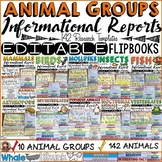34 results
Elementary basic principles simulations
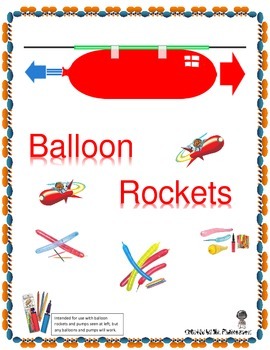
STEM Lab Activity Balloon Rockets - Newton's Third Law of Motion
Students will experiment with balloon rockets to observe and study Newton's Third Law of Motion and the principles of rocket propulsion. Students will collect, analyze, and graph data from the launches in this STEM lab activity.
Subjects:
Grades:
K - 12th
Types:
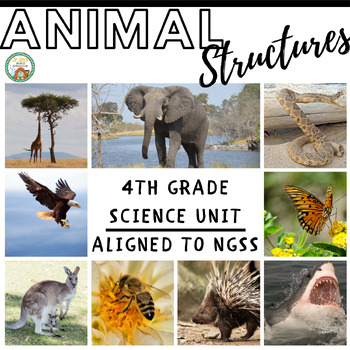
4th Grade Science: Animal Structures (NGSS Aligned)
This unit was designed specifically to address NGSS 4-LS1-1: Construct an argument that plants and animals have internal and external structures that function to support, survival, growth, behavior, and reproduction. This unit is appropriate for grades 3-5. Upper Elementary students learn about the structures animals have to help them with nutrition, self-defense, reproduction, and communication. Activities include:Activity 1: Animal Structures Sort: This introductory activity gets students fo
Subjects:
Grades:
3rd - 5th
Types:
NGSS:
4-LS1-1
Also included in: 4th Grade Science Plant and Animal Structures Bundle (NGSS Aligned)
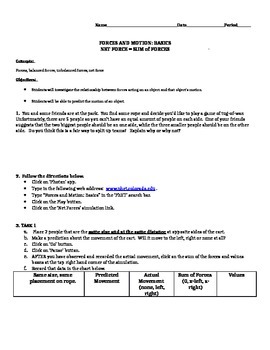
PhET Forces and Motion Webquest
Access a free PhET simulation and allow students to work independently in discovering the effects of forces on objects.
Subjects:
Grades:
5th - 8th
Types:

Weather Super Bundle
This bundle includes 3 awesome units to support the study of weather. These units are aligned to NGSS standards, and also include many opportunity for students to integrade language arts with reading, writing, and presenting. These units are available separately, but you will save by purchasing all 3 in this bundle. Here's what's included in each unit:Weather:Activity 1: Making a Class Weather Station: Students make their own weather station then use it to keep a weather log.Activity 2: C
Grades:
3rd - 6th
NGSS:
3-ESS3-1
, 3-ESS2-1
, 3-ESS2-2

Google Slides - Evolution unit - adaptation, variation, evidence and graphing
6 consecutive lessons with activities!Independent work, partner work, group work, whole class.Summative and formal assessmentsStudents will be able to construct an explanation based on evidence that describes how genetic variations of traits in a population increase some individuals’ probability of surviving and reproducing in a specific environment. Analyze and interpret data for patterns in the fossil record that document the existence, diversity, extinction, and change of life forms throughou
Subjects:
Grades:
5th - 12th, Higher Education, Adult Education
Types:
NGSS:
MS-LS4-3
, MS-LS4-1
, MS-LS4-2
, MS-LS4-5
, MS-LS4-4
...
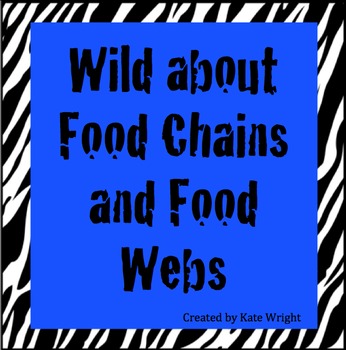
Wild About Food Chains and Food Webs
I created this to give students some hands-on practice with the concepts of food chains and food webs. This will make your students THINK about food relationships in an ecosystem!
During this activity, students use cards to create food chains and then work to connect and overlap the food chains to create a food web. Both card sets are for similar grassland ecosystems, but one set is slightly more challenging than the other.
Includes:
- Recommendations for pre-teaching prior to the activit
Subjects:
Grades:
4th - 6th
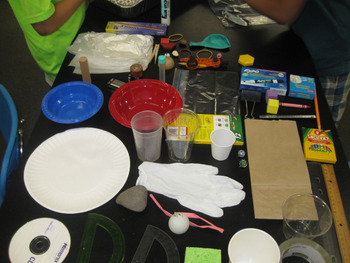
Taxonomy, Sorting Activity, Classification, Kingdoms, Diversity (Word & PDF)
This is a great way to introduce a unit on taxonomy, the diversity of life, and the six kingdoms of living organisms. This is a group activity, but it could be done individually as well. I am including the full directions below so you can get an idea of what this activity entails. There are four follow-up/reflection questions for students to complete on their own after the activity.
Directions:
To begin, divide students into groups. Groups of three or four work fine. Larger groups may keep som
Subjects:
Grades:
3rd - 6th
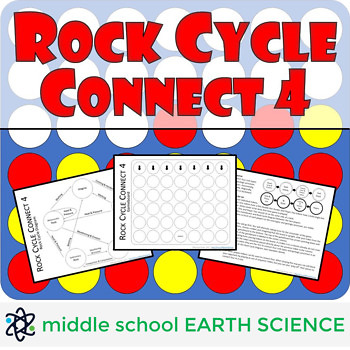
Rock Cycle Game Connect 4
Rock Cycle Connect 4 Game includes a diagram of the rock cycle, a detailed lesson plan with suggested pre-game activities and a preparation checklist, tokens for each player, a familiar looking gameboard, a visual example of gameplay and easy to follow game instructions.Field tested with sixth-graders, this game challenges students to think of the rock cycle in terms of states of matter and geologic processes. It helps students to break misconceptions of the rock cycle as a predetermined order r
Grades:
5th - 9th
Types:
Also included in: Earth Science Games Bundle
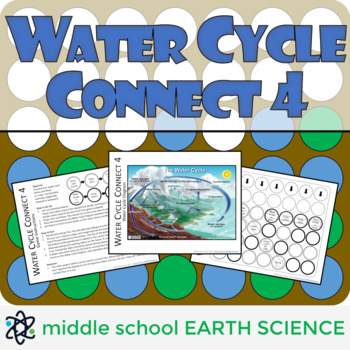
Water Cycle Game Connect 4
Water Cycle Connect 4 includes a diagram of the water cycle, a detailed lesson plan with suggested pre-game activities and a preparation checklist, tokens for each player, a familiar looking gameboard, a visual example of gameplay and easy to follow game instructions.Field tested with sixth-graders, this game challenges students to think of the water cycle in terms of water stores and water flows. It helps students to break misconceptions of the water cycle as a simple process involving only eva
Grades:
5th - 9th
Types:
Also included in: Earth Science Games Bundle

Scientific Method Experiments Bundle
Teach the Scientific Method with these experiments! This Bundle includes 4 experiments:Will It Float?Sounds WavesFood ColoringDisappearing ColorThis product includes the following for each experiment:•Slides for Testable Questions, Materials, Variables, Hypothesis, Research, Observations, Conclusion, and Extension Questions•Teacher Prep Directions for Teacher Demonstration OR Student-Led Experiment•Experiment Observation Log Handout for studentsYou may also be interested in my product:Save Fred!
Subjects:
Grades:
3rd - 5th
Types:
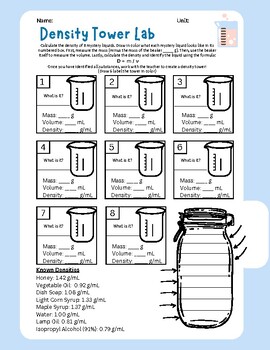
Density Tower Lab
Calculate the density of 8 mystery liquids. Draw in color what each mystery liquid looks like in its numbered box. First, measure the mass (minus the mass of the beaker ____ g). Then, use the beaker itself to measure the volume. Lastly, calculate the density and identify the liquid using the formula: D = m / vOnce you have identified all substances, work with the teacher to create a density tower! (Draw & label the tower in color)
Subjects:
Grades:
5th - 12th
NGSS:
MS-PS1-2
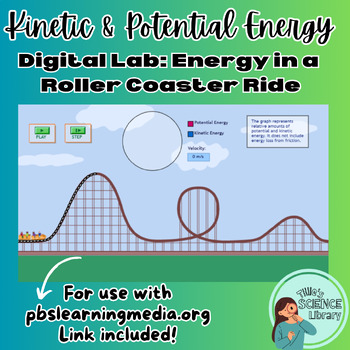
Digital Lab: Potential and Kinetic Energy in a Roller Coaster Ride
Students explore, collect data, analyze, and apply the concepts of kinetic and potential energy using the interactive simulation at https://contrib.pbslearningmedia.org/WGBH/conv16/conv16-int-rollercoaster/index.htmlCan be independent work or teacher led. Great for an introduction to potential and kinetic energy!
Subjects:
Grades:
5th - 8th
Types:
NGSS:
MS-PS3-2
, MS-PS3-1

Best Weathering, Erosion, Deposition Model Ever- Inexpensive w/ writing piece
I can not begin to tell you how much I love using this model in my class. It demonstrates weathering, erosion, and deposition (without the use of stations, water, or sand!) at a minimal cost. It is a hands-on model that takes very little class time and just a small amount of teacher monitoring. The model runs for 3-5 days using just a few minutes of class time at the beginning of each day. After the model has run, the students write a paragraph explaining the model.
Included in this produc
Grades:
4th - 7th
Types:
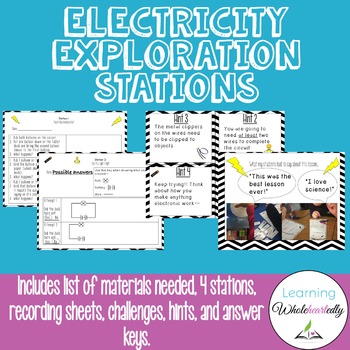
Electricity Exploration Stations
This activity was designed to be a PBL Entry Event or Attention Grabber for a larger unit on electricity and magnetism. However, it could be used as an introduction lesson into electricity and magnetism.
Station 1: Ouch! You Shocked Me! - static electricity
Station 2: Can You Light It Up? - circuits
Station 3: What Uses Electricity? - picture sort
Station 4: The Mystery of Magnets - magnetism
This resource includes everything you need to set up a 4 station rotation.
A list of resources need
Subjects:
Grades:
3rd - 4th
Types:
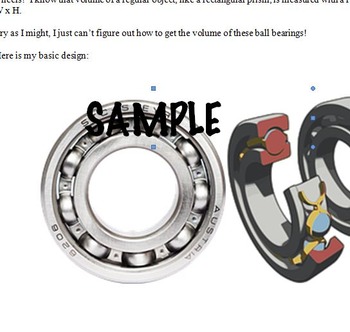
Volume of Irregular Objects Lab STEM PBL
This lab provides students with the opportunity to work as a team to solve a skateboard company's dilemma!
You will need 60-80 minutes to complete this lab.
The lab comes with a diagram to help students understand the task without minimizing its challenge!
Although this lab stands on its own legs, you may want to "hook" the kids by showing them a video of skateboard production OR allow for research opportunities online.
Students will discover that they can find the volume of an irregular
Subjects:
Grades:
5th - 6th
Types:

QR code Kinetic and Potential Energy Activity
This activity requires a QR code reader on either a smart phone or IPAD. Students scan the QR code; which brings up a picture showing either kinetic or potential energy. The students then need to answer questions about energy by examining the pictures.
Subjects:
Grades:
5th - 10th
Types:

Changing States of Matter
This product is intended to give you and your students a hands-on opportunity to predict and observe how water can change states. This is intended to be a culminating investigation after your study of states of matter. It is also intended to be a small group activity. First, students will be given a zip-top bag full of ice cubes. The handouts will walk them through the process of predicting, observing, and explaining the changes the ice cubes experience after being placed outside for an extended
Subjects:
Grades:
1st - 6th
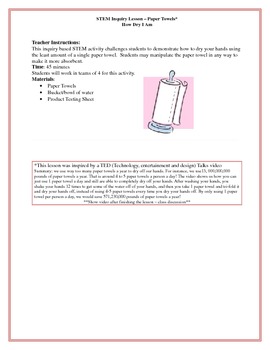
STEM - How Dry I Am Paper Towel Activity
This STEM based activity challenges students to "figure" out a way to dry their hands with the least amount of paper from a paper towel. This activity is based on a video from TED Talks. Students work in groups of 4 to brainstorm and then create and then demonstrate how to dry their hands in an efficient way with little paper towel waste. They will test their ideas, document their ideas in a product Testing Report and then demonstrate their technique for the class. This is an inexpensive, fu
Grades:
5th - 9th
Types:
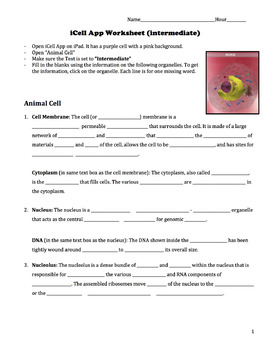
iCell App Worksheet- Intermediate Text
This worksheet accompanies the iCell app (Full name: HudsonAlpha iCell. The app has a purple cell with a pink background). Students with access to iPads or other tablets with the Google Play Store may download this FREE app! The app is a great visual for students that allows them to view digital 3D images of an animal cell, a bacteria cell, and a plant cell. The main organelles are included and students can click on the individual organelles and manipulate the 3D image to zoom in and turn the ce
Subjects:
Grades:
5th - 12th

Science Fair Board Cards
Pre-made cards for labeling sections of your Science Fair Board.
Grades:
K - 5th
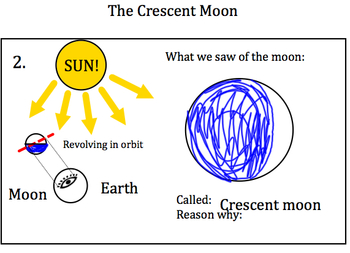
Lunar Phases Part 1
The lunar phases are typically hard for students to learn, mostly because they are really hard to visualize. Thus, I created a simulation using styrofoam balls stuck on pencils to help students see exactly why the moon "changes shape." This lesson focuses on the integration of diagramming, keen observation, and logic. As students rotate, diagram and discuss, they begin to understand how our perspective determines everything.
In a later lesson, we explore what the moon looks like from "above" o
Subjects:
Grades:
5th - 8th
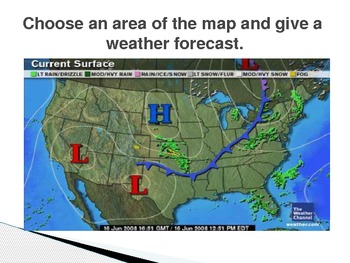
Meteorologist Game
Students can pretend to be meteorologists and predict the weather in various parts of the United States by identifying the weather map symbols and recalling the associated weather.
Subjects:
Grades:
4th - 5th

Nocturnal Animals
Students love learning about nocturnal animals! This resource is great for primary students who are learning the difference between nocturnal and diurnal animals. It contains two lessons that you can use in your classroom in either a whole group or small group setting. It would also be a great resource for a parent night focusing on science. Both lessons are student-centered and engaging because they involve movement and discussion.
Subjects:
Grades:
PreK - 2nd
Types:
NGSS:
2-LS4-1
, K-LS1-1
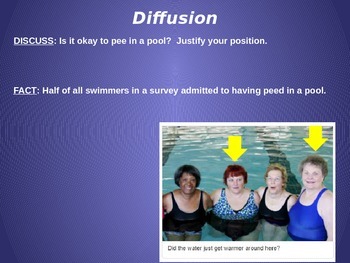
Diffusion Animation - Peeing in Pool
Super fun animation that is a real hit with middle school students (surprise surprise). Animates how molecules move from areas of high concentration to areas of low concentration, using a context that students can relate to.
Subjects:
Grades:
5th - 10th
Showing 1-24 of 34 results




